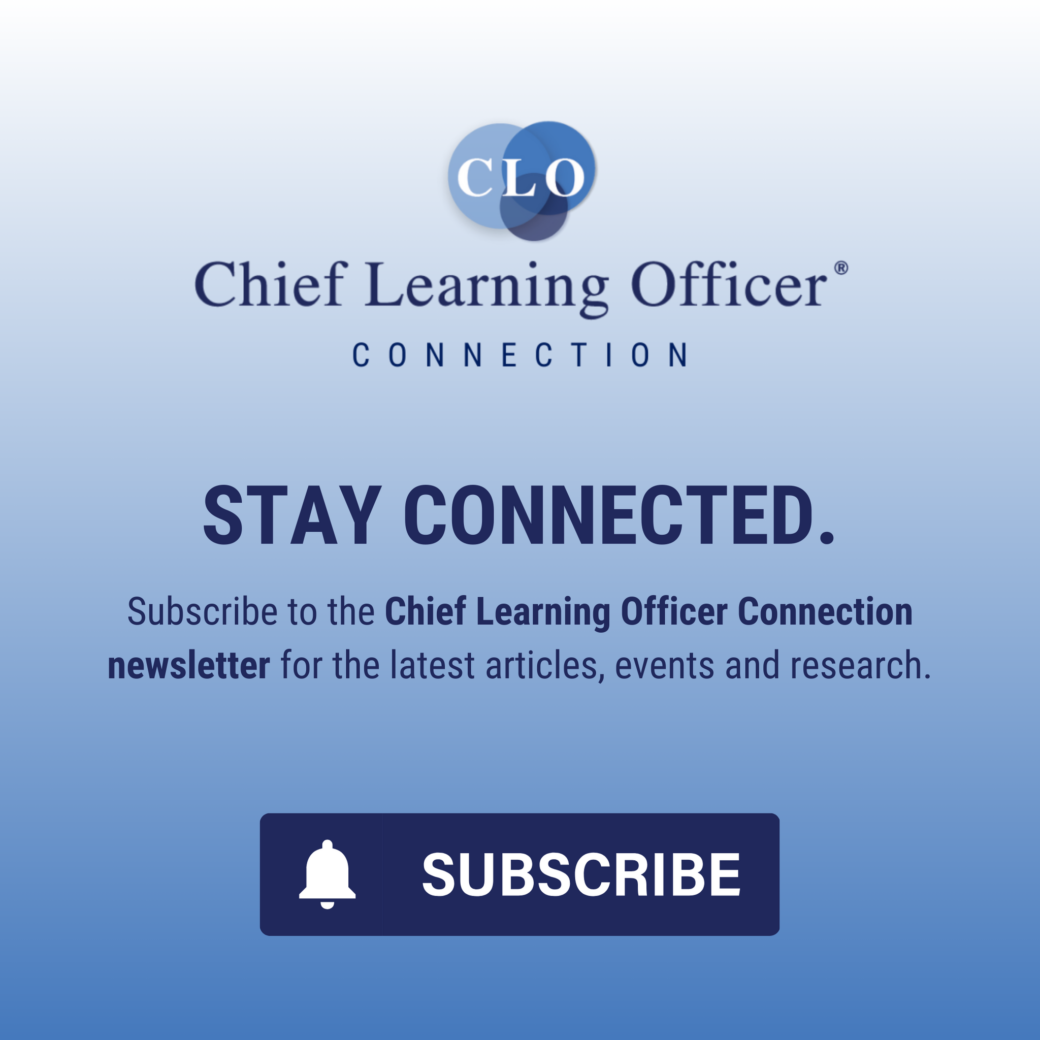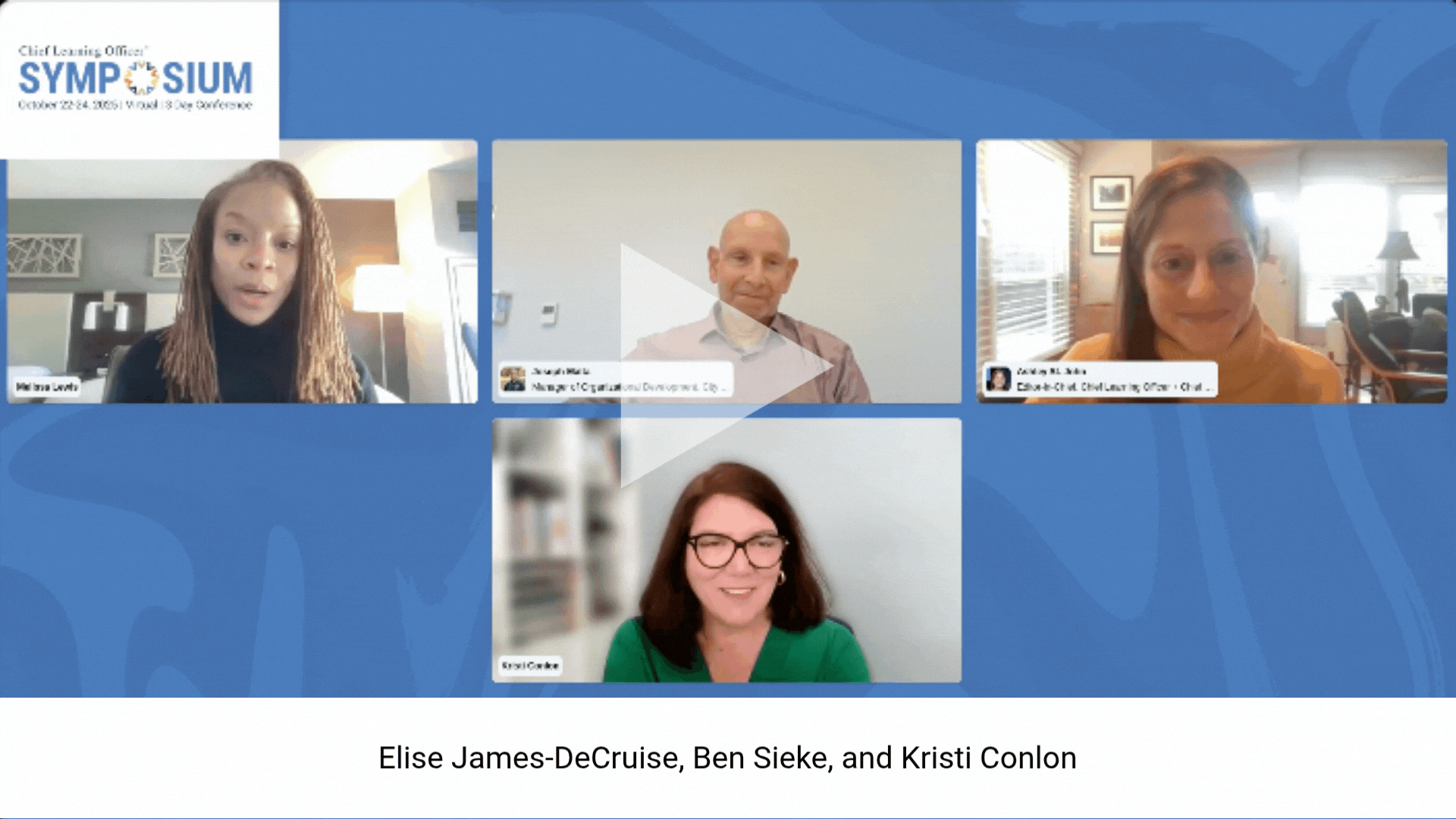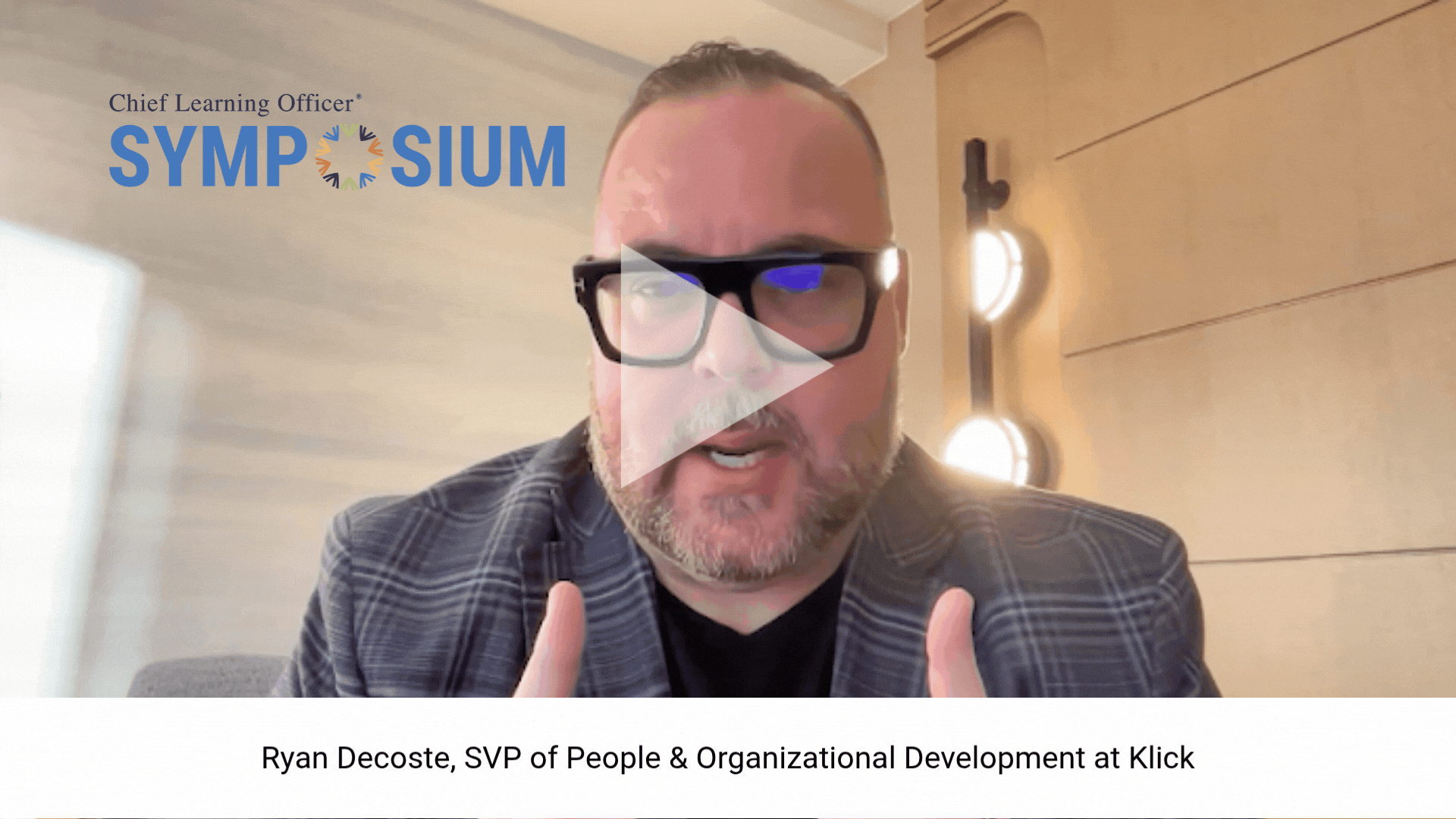For the seasoned chief learning officer, it’s not breaking news that artificial intelligence is reshaping the workforce. Recent insights show that desk jobs are at the highest risk of being changed by AI.
However, for CLOs, it’s time to move on from the “what” and look to the “how” in achieving a future-ready workforce that strengthens organizational competitiveness and agility. The impact of AI on most office jobs is adding pressure by creating skills gaps in areas like administration and analytics.
Businesses need to reskill their workforce to keep pace with the AI evolution, not simply replace rote-based roles with technology, in order to maximize overall productivity and profitability.
Pinpointing reskilling priorities
To fully understand where AI is impacting jobs the most, I like to refer to what I call the “U-curve of value.” At one end sit highly specialized manual jobs that require lots of dexterity, such as car assembly teams. On the other end are the executive leadership roles that need innately “human” skills like empathy, critical thinking and creativity.
The roles that sit in the middle, the ones involving repetitive tasks and analysis, are in the red zone, like customer care supervisors handling basic tasks, or financial analysts. AI tools are able to execute these tasks in a fraction of the time.
Instead of making the people in these roles redundant, businesses should empower them to hone future-ready skills. It’s a win-win for businesses and employees alike: By reskilling in the right areas, they’re creating a stronger foundation for innovation and better AI deployment.
Ultimately, the synergy between man and machine will make or break a business’s AI strategy; there’s no situation where AI is working totally autonomously. Empowering the teams working alongside the tools is therefore a must for businesses that want to future-proof their operations and digital transformation strategies.
Insights from PwC show that the need for AI skills has continuously grown since 2016—AI specialist jobs are growing 3.5 times faster than all jobs. It’s clear that employers want people adept at overseeing and managing AI.
For instance, an AI tool can instantly collate CRM data and uncover key insights to guide a company’s marketing campaign. Theoretically, the company could replace marketing ops with AI to manage the insights that guide the campaign. However, what if the AI hallucinates, producing skewed customer insights because of missing data? Moreover, an AI tool doesn’t necessarily possess the empathy or emotional intelligence that a person does to ensure messaging and tone resonate with target audiences.
A marketer adept at overseeing AI will know when to spot these issues and act accordingly, resolving issues before they snowball and damage the company’s reputation, relationships and profits. Skills like basic data analysis and literacy are highly applicable in these instances.
Additionally, honing skills like strategic thinking and critical analysis is hugely important. A marketer using AI-driven insights might spot a stronger ROI potential via a certain targeting strategy. AI can be used to contextualize data to a certain extent, and humans are privy to more subjective details that fuel creativity and strategic thinking, improving the overall bottom line.
Mapping out the reskilling playbook
Reskilling won’t happen overnight, but with the right playbook, CLOs can ensure their workforce is thoroughly prepared to oversee and collaborate with AI tools, maximizing the business benefits.
Prioritized skills—data and AI literacy, critical and strategic thinking, emotional intelligence and creativity—need to be embedded across the organization, not just within leadership. Nurturing a culture that embraces innovation, continuous learning and adaptability is also crucial to a resilient workforce.
To establish clear pathways for reskilling, roles affected by AI need to be audited. This way, CLOs can pinpoint which processes are being automated and where the human touch needs to be augmented. Auditing processes to understand how AI is reshaping them also enables team leaders to identify skills gaps and align training accordingly.
It’s vital for reskilling roadmaps to be adapted to specific roles and tied to tangible results. This helps CLOs guide training initiatives around AI, fine-tuning them according to measurable outcomes and adapting them to business needs.
Training approaches should be designed according to the reskilling needs of roles. For example, if there are many aspects of AI-related skills that a financial analyst needs to hone, multi-part modules could be more beneficial to ensure comprehensive training and understanding. That could include core elements of data management like security and ethical handling of sensitive financial data, case-specific responses for AI-generated alerts, spotting errors and acting accordingly and designing reports based on AI-powered insights.
Measurable results are also incredibly important to paving clear pathways around reskilling, whether that’s increased ROI, stronger customer relationships or better productivity rates. For example, a financial analyst who’s well-versed in prompt engineering knows how to leverage generative AI to run multiple forecasting models based on finance data. They’re better equipped to provide predictive, proactive insights that reduce risk and boost financial performance by a measurable rate.
In this case, the productivity gains can be directly measured against time saved from low-stakes repetitive tasks, like filling out spreadsheets, to driving strategic impact and generating ROI in a fraction of the time.
CLOs have an important role in guiding the next wave of skills transformation and championing an AI-ready workforce. By understanding how people in impacted roles should adapt to maximize their AI aptitude, CLOs can strengthen resilience and agility.
















